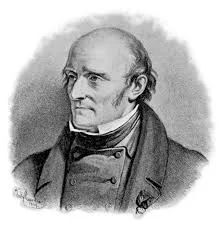-
The roots of physical therapy are traced back to Greece, as Hippocrates and Galen were credited for using massage and exercise to care for injuries and promote healing.
-
 Swedish physical therapist Per Henrik Ling developed the "Swedish Movement System," which created the idea of structured exercise as a type of medical treatment. Ling's approach inspired the development of physiotherapy in Europe and eventually in America.
Swedish physical therapist Per Henrik Ling developed the "Swedish Movement System," which created the idea of structured exercise as a type of medical treatment. Ling's approach inspired the development of physiotherapy in Europe and eventually in America. -
In World War 1, the United States Military began training women known as "Reconstruction Aides" for the purpose of rehabilitating wounded soldiers. This instance was the first organized form of physical therapy in the U.S. as it marked the start of the profession's recognition.
-
 In 1921, Mary McMillian founded the American Women's Physical Therapeutic Association, which at the time was AWPT until it was eventually changed to the American Physical Therapy Association (APTA). This organization brought structure, advocacy, and education standards for the new profession. McMillian worked as the first physical therapy aide in WW1, making her the first physical therapist in American history.
In 1921, Mary McMillian founded the American Women's Physical Therapeutic Association, which at the time was AWPT until it was eventually changed to the American Physical Therapy Association (APTA). This organization brought structure, advocacy, and education standards for the new profession. McMillian worked as the first physical therapy aide in WW1, making her the first physical therapist in American history. -
In 1956, the APTA created standardized schooling requirements and accreditation processes for physical therapy programs in America. This educational advancement created consistency in professional training and lifted the field to a respected healthcare discipline.
-
The Commission on Accreditation in Physical Therapy Education, or CAPTE, was founded in 1978 by the APTA to oversee the accreditation process of the physical therapy education programs in the United States. The U.S. Department of Education recognized them as the sole entity responsible for granting accreditation status to qualified physical therapy education programs. CAPTE aims to advance physical therapy education through accreditation that guarantees programs meet established standards.
-
In the 1990s, the U.S. required every physical therapist to pass the National Physical Therapy Exam (NPTE), administered by the Federation of State Boards of Physical Therapy (FSBPT). The NPTE ensures all candidates meet a baseline of professional competence to protect public safety.
-
Physical therapy education transitioned from a bachelor's or master's level to a Doctor of Physical Therapy (DPT) degree, as in 1996, the first professional doctor of physical therapy program in the nation was created at Creighton University. The creation of the DPT degree recognized that there was a need for a greater understanding of how to treat a patient. So much so that in January 2016, the CAPTE made the DPT the required degree for all of its accredited physical therapy programs.
-
Modern-day physical therapy integrates technology like robotic-assisted rehab, motion capture analysis, and telehealth platforms. One major innovation is the development of wearable sensors and mobile health apps such as WHOOP and Apple watches. These devices can track range of motion, steps, and muscle activation, and they give therapists data accurate enough to adjust their treatment plans.